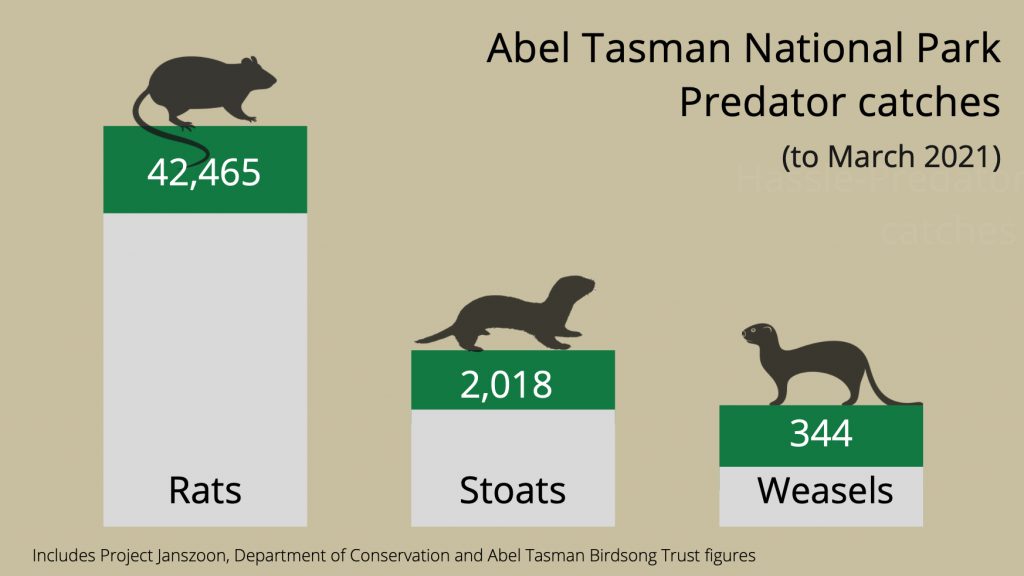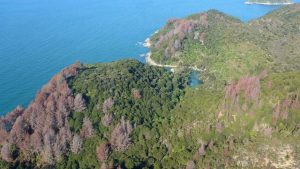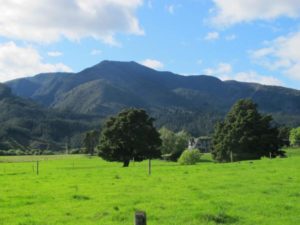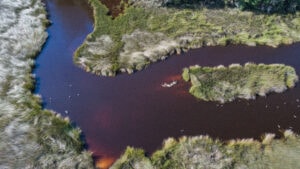Predator control is increasing the chances for native species to survive and thrive in the Abel Tasman National Park with a trapping milestone reached last month.
The 2,000th stoat was trapped in the national park in March. Figures show that as of March; 2018 stoats, 42,465 rats and 344 weasels have been trapped in the last eight years.
The trapping networks in the park are a partnership between the Abel Tasman Birdsong Trust, Project Janszoon, Department of Conservation and Air New Zealand.
“This milestone demonstrates the scale of the challenge we have to protect our native species from introduced predators, and it’s also a testament to what we can achieve when we work together,” says Project Janszoon director Bruce Vander Lee.
The hard work from DOC staff and community volunteers to trap predators has made it possible for vulnerable species like kākā and pāteke to be returned to the Abel Tasman. Abel Tasman Birdsong Trust coordinator Abby Butler says they are proud to be part of the team removing so many predators from the Abel Tasman ecosystem.
“Statistics like this (and also removing 42,000 rats) makes us realise that we are having a big impact on predator numbers in the park. That is a lot less mouths to feed!,” she says.
“Stoats are deadly and relentless hunters who don’t just kill to survive – they kill everything in sight and store surplus food for later. Every one trapped provides more chances for native species to thrive,” says DOC senior biodiversity ranger Jim Livingstone.
Stoats prey on native birds, rats, rabbits, hares, hedgehogs, lizards and insects like wētā so they have a significant impact on ecosystems. They are such a devastating predator because they can climb and swim, and have good eyesight, hearing and a strong sense of smell. They also have big families. A female stoat can have up to 12 babies at a time, and a male stoat can impregnate baby females at only 2-3 weeks old – before they even open their eyes.
Around 95% of the Abel Tasman is currently trapped.




